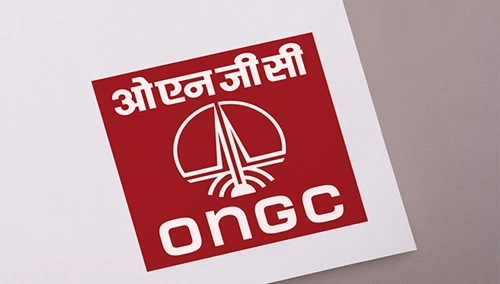Oil and Natural Gas Corporation Limited (ONGC) is one of India’s largest state-owned enterprises, operating predominantly in the oil and natural gas sectors. As the country’s top energy company, ONGC plays a pivotal role in ensuring India’s energy security by producing over 70% of its crude oil and 80% of its natural gas. This SWOT analysis explores ONGC’s strengths, weaknesses, opportunities, and threats for 2024, providing insight into its current position and future potential.

ONGC Current Overview:
ONGC is a Maharatna Public Sector Undertaking (PSU) and continues to dominate the Indian energy landscape. The company is involved in upstream activities like exploration and production of oil and gas, along with downstream refining operations through its subsidiary, Mangalore Refinery and Petrochemicals Ltd. In 2024, ONGC’s strategic focus has been on increasing output from domestic fields, expanding international exploration, and investing in renewable energy. However, the company faces challenges such as aging oil fields, volatile global oil prices, and rising competition in both domestic and international markets.
Strengths:
1. Dominant Market Position: ONGC produces approximately 70% of India’s crude oil and 80% of its natural gas, making it the key player in the country’s energy sector. This stronghold gives ONGC significant leverage in the Indian market.
2. Government Backing: As a state-owned enterprise, ONGC enjoys substantial support from the Indian government. This backing not only strengthens the company financially but also ensures stable operations in an industry marked by high capital expenditures.
3. Vertical Integration: ONGC operates across the value chain, from exploration and production to refining and distribution, which helps the company mitigate risks across different segments and maintain profitability.
4. Strong R&D Capabilities: ONGC invests in advanced research initiatives like the Gas Hydrate Research & Technology Center, enhancing its capability to explore new forms of energy, such as gas hydrates, to secure future energy reserves.
Weaknesses:
1. Bureaucratic Inefficiencies: Being a government-run entity, ONGC faces slower decision-making processes due to regulatory hurdles and bureaucratic delays. This impedes its ability to respond swiftly to market changes and operational challenges.
2. Depleting Domestic Oil Fields: ONGC is heavily dependent on mature oil fields, which are experiencing declining production rates. This poses a risk to the company’s long-term output and necessitates significant investment in newer technologies and fields.
3. Limited Global Presence: While ONGC has made strides in international exploration, its global footprint remains smaller compared to multinational oil giants. The company still heavily relies on its domestic market, making it vulnerable to local market downturns.
4. High Costs and Subsidies: The company’s financial performance is often affected by government-mandated fuel subsidies, reducing its margins, especially during periods of high crude oil prices.
Opportunities:
1. Expansion in Global Markets: ONGC has immense potential to grow its international operations through strategic partnerships and exploration in countries with untapped energy reserves, especially in Africa and Latin America.
2. Renewable Energy Investments: With global shifts toward sustainability, ONGC is focusing on diversifying its energy portfolio by investing in renewable energy projects, including solar, wind, and hydrogen. This will help the company stay relevant in a decarbonizing world.
3. Rising Crude Oil Prices: Higher global oil prices present a significant opportunity for ONGC to improve its revenue margins, especially if it can ramp up production from both domestic and international sources.
4. Technological Advancements in Exploration: ONGC’s investments in advanced technologies, such as 3D visualization and deep-sea drilling, allow it to improve efficiency in exploring untapped oil and gas reserves.
Threats:
1. Volatility in Oil Prices: ONGC’s financial health is heavily dependent on global crude oil prices, which are often volatile. Sharp declines in prices can adversely impact the company’s revenue and profitability.
2. Intense Competition: ONGC faces stiff competition from both domestic players like Reliance Industries and Bharat Petroleum, as well as international giants, which makes market share expansion more difficult.
3. Environmental and Regulatory Risks: Increasing environmental concerns and stringent regulations around fossil fuel extraction pose significant operational challenges. ONGC must invest heavily in cleaner technologies and mitigate risks associated with oil spills and other ecological impacts.
4. Shift Toward Electric Vehicles (EVs): The growing adoption of EVs and cleaner fuel technologies threatens the long-term demand for oil. This global shift toward electric mobility could reduce the demand for traditional fossil fuels, impacting ONGC’s core business.
Future Plans of ONGC:
ONGC is focusing on expanding its exploration activities both domestically and internationally to secure new reserves and counteract the decline in output from mature fields. The company has ambitious plans to increase its renewable energy portfolio, targeting solar and wind projects, while continuing to explore new forms of energy like gas hydrates. Additionally, ONGC is enhancing its research and development capabilities to remain competitive in the evolving energy landscape.
Conclusion:
ONGC remains a cornerstone of India’s energy infrastructure, leveraging its dominant market position and government backing to drive growth. However, the company faces challenges from aging fields, environmental regulations, and shifting global energy dynamics. By capitalizing on opportunities in global expansion, renewable energy, and advanced exploration technologies, ONGC can continue to secure its leadership in India’s energy sector while adapting to global energy trends. Strategic investments and technological innovation will be key to sustaining its growth in the coming years.